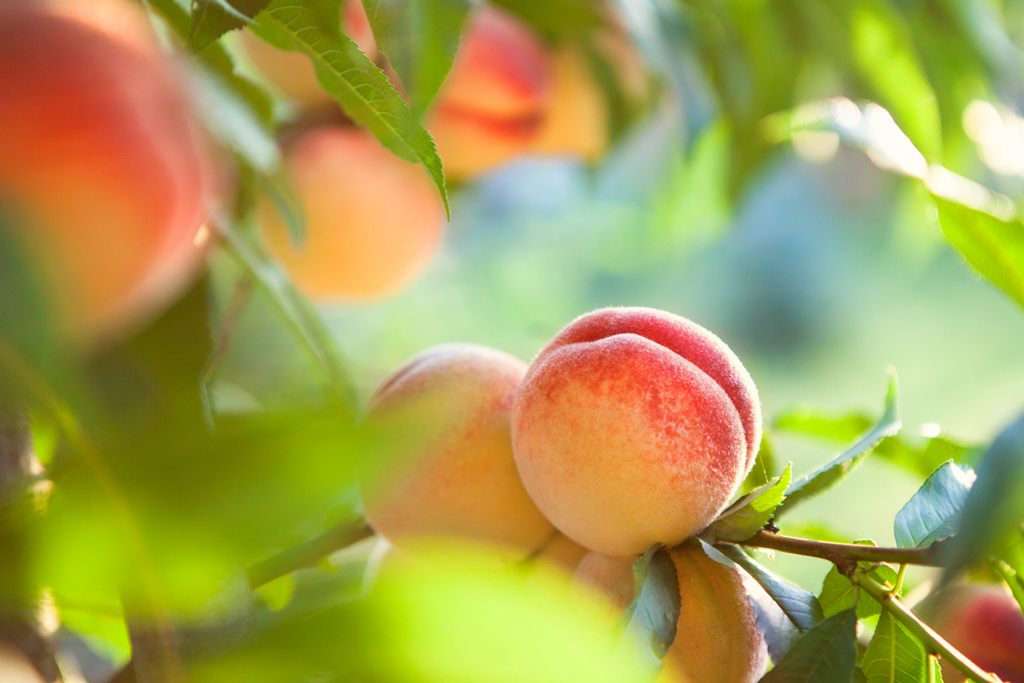Now through mid-February is the best time to prune all of your fruit trees. Fruit trees fall under three basic fruiting systems: open center system, central leader system, and natural.
The varieties of fruit trees that fall under the open center system are peach, apricot, nectarine, plum, prune, and persimmons. The central leader system varieties include apple and pear. Natural, with some training for size manageability, are fig and pomegranate.
Open center pruning
The main idea of pruning peach and open center system fruit trees is to remove the old, gray-colored, slow-growing shoots, which are non-fruit bearing. We want to keep the one-year-old, 18- to 24-inch, red-colored bearing shoots.
Removing 40 percent of the tree annually stimulates new growth each spring.
The second objective of pruning is to lower the fruiting zone to a height that is comfortable to harvest the fruit. The third objective is to open the center of the tree: This increases air circulation, reduces disease pressure, and allows sunlight to accelerate fruit color and sweetness.
First, remove all of the dead limbs, rootstock suckers, and water spouts in the lower 3 feet. Next, remove all shoots above the 7-foot mark other than the red-colored, 18- to 24-inch fruiting shoots. Then, remove all of the shoots that grow toward the middle of the tree. Picture an upside-down umbrella: That is what you want the finished product to look like. Finally, remove all of the old, gray wood in the 3- to 7-foot fruit production zone.
Central leading
In the beginning, when you plant a young apple or pear tree, prune the tree back one-third. As the tree matures, allow the main trunk (the center leading upward) to grow with the tree’s limbs coming off of the main trunk.
Apple and pear trees have narrow crotch angles. This means the limbs have a small angle off of the main trunk. You might train the tree to have a slightly wider angle to spread more should you choose. Cut a piece of wood with notches at each end of the radius of the limb that you are going to spread. The length of the cut piece of wood will be determined by the distance of the limb to the trunk and how far you would like to widen the limb away from the trunk.
Another option is to use a soft rope or padding under a rope. Either use weights at the end of the rope to pull the limb downward or stake the rope to the ground.
Ideally, the spacing from the limb to the central leading trunk should be 8 inches to no more than 2 feet. The spacing or spreading tree allows for more sunlight, resulting in a healthier tree and plumper fruit.
Natural
Fig and pomegranate trees require little pruning. The pruning might be simply to maintain the tree at a height that is easiest for you to harvest your yummies.
Mark your calendars
The 23rd annual Hill Country Lawn and Garden Show, sponsored by the Highland Lakes Master Gardener Association, is March 25 from 10 a.m.-4 p.m. in the Burnet County AgriLife Extension auditorium, 607 N. Vandeveer in Burnet.
The Llano County Master Gardener Association Lawn and Garden Show is April 1 from 9 a.m.-1 p.m. on the Llano County Courthouse square, 800 Ford St. in Llano.
Till next time.
Keep your souls and soles in your garden! Remember the True Master Gardener: Jesus said, “I am the vine; my Father is the Gardener.” John 15:1
"In the Garden" is written by daughter-father gardening team Martelle and Bill Luedecke. If you have gardening questions, contact Martelle at 512-769-3179 or luedeckephotography@gmail.com or Bill at 512-577-1463 or bill@texasland.net. Read more "In the Garden" columns in the 101 Lawn & Garden Guide.

